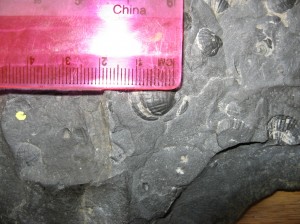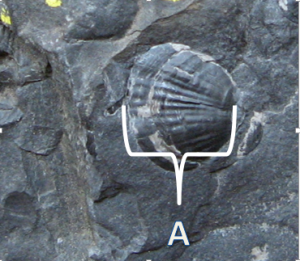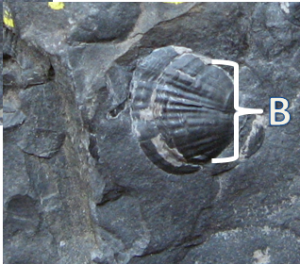 |
 |
 |
Just like people, organisms from the Devonian grew larger if they ate well. If all of the fossils are very tiny, you are likely looking at an environment where there was little food available.
Shallow environments often have abundant food resources. This food ultimately comes either from plants washed into the ocean from the shore, or plants living in the water close enough to the surface for photosynthesis. In environments with more food, one would expect to find some larger individuals in addition to small ones.
Shallow environments also have more frequent, powerful waves and may favor organisms with shells that can withstand pounding waves or that can burrow into the sediment.
Deeper environments (where mud is being deposited) often have less nutrients. Here we would expect to find, on average, smaller individuals. Muddy environments, which are often found deeper, may also favor organisms with body shapes that allow them either to move through the mud (e.g., with legs), not sink into the mud (small or flat and broad), and not be clogged by settling mud (animals that can close up).
